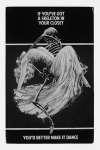Leonor
Fini
Leonor Fini, the Argentine-Italian painter, was a figure associated with Surrealism, creating a world of female strength and sexuality. If you’re looking for Leonor Fini original prints and editions for sale or would like to sell, request a complimentary valuation and browse our network’s most in-demand works.
Leonor Fini art for sale
Discover Leonor Fini prints for sale, exclusively available through our private network of collectors. Explore signed and unsigned screenprints, lithographs, digital prints, and rare editioned proof prints by era-defining blue chip artists.
Sell Your Art
with Us
with Us
Join Our Network of Collectors. Buy, Sell and Track Demand
Biography
Born in Buenos Aires in 1907, Leonor Fini spent most of her life in Europe, where her prodigious talent and idiosyncratic style emerged early on. Raised in Trieste, Italy, Fini displayed an innate inclination towards the arts, educating herself by visiting galleries and reading extensively. Her early encounters with Italian Renaissance painters would later inform her meticulous technique and the ethereal quality of her artworks.
Self-directed exploration led Fini to Paris in the 1930s, a bustling hub for avant-garde artists. She quickly became an integral part of the Surrealist circle, although she maintained a deliberate distance from any formal affiliations, asserting her creative autonomy. Fini's work during this period was characterised by its striking portrayals of women, often draped in elaborate costumes and set against dreamlike landscapes, influenced by her own flamboyant and experimental personal style.
Throughout her career, Fini engaged in collaborations and friendships with other artists and intellectuals, including Max Ernst, Giorgio de Chirico, and Salvador Dalí, which enriched her vision. Her work, however, remained distinctly her own, asserting a visual language that was defined by her experimental approach which.
Fini's exhibitions and achievements are marked by significant milestones, such as her participation in the 1936 London International Surrealist Exhibition and her first solo show in New York City in 1939. Her artwork garnered acclaim for its fluid depiction of gender. Fini did not identify herself as being part of the Surrealist movement, however her work's provocative exploration of the subconscious, dreams and eroticism has positioned her work within the Surrealist movement.
The predominant themes in Fini’s art include sexual tensions, mysteries, and games. She frequently explored the interplay between dominant females and passive males, with women often depicted as sphinxes, a symbol she identified with. Fini was also a renowned portraitist, capturing the likenesses of friends including Jean Genet and Margot Fonteyn. Her proficiency of stage and screen design is evident in her numerous groundbreaking theatre sets and costume designs for productions like Renato Castellani's Romeo and Juliet and Federico Fellini's 8½.
Fini's art is a testament to the power of self-expression and the courage to defy convention. She lived and worked in Paris for most of her life, and her legacy persists in prestigious collections and exhibitions worldwide, including Tate Modern and The Centre Pompidou. Fini's idiosyncratic spirit extended from her personal life to her art. She famously maintained relationships with multiple lovers simultaneously, embodying her belief in the freedom of self-expression.

























